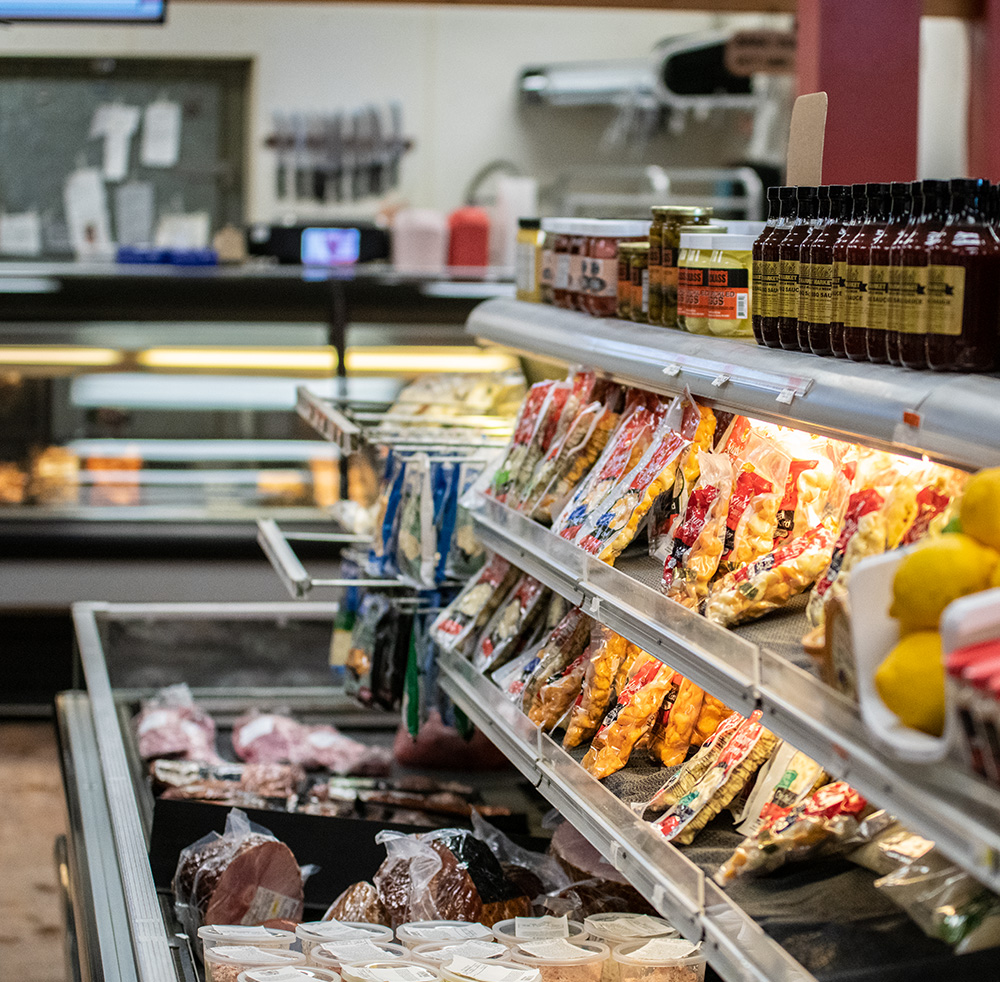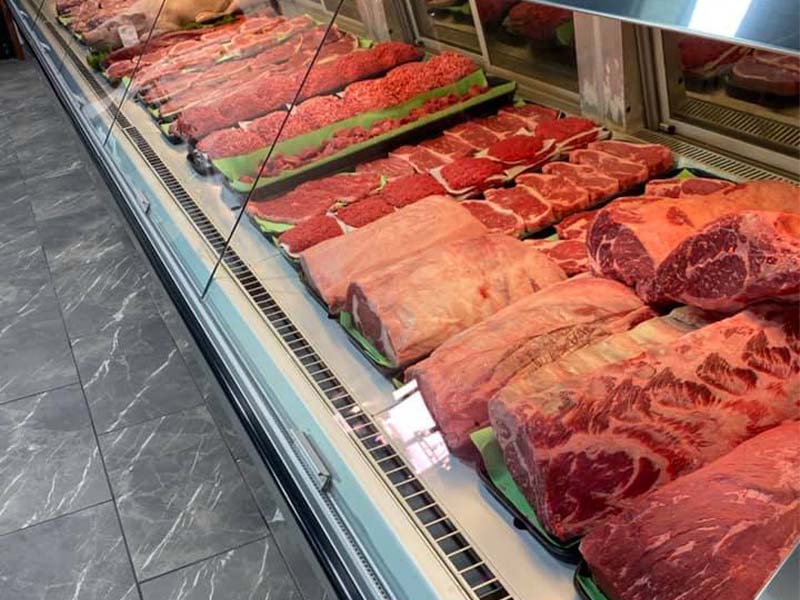Why Residents Love Bagley Farms Meat Market Edwardsville IL for Their Meat Shopping
Why Residents Love Bagley Farms Meat Market Edwardsville IL for Their Meat Shopping
Blog Article
Reveal the Art of the Butcher's Cut in a Modern Meat Market
In the ever-evolving landscape of modern meat markets, the butcher's cut has actually transcended its typical roots, combining old-time craftsmanship with modern techniques. What genuinely sets the modern-day butcher apart is their ability to create a much deeper connection in between consumers and the beginnings of their meat.
Development of Butchery Strategies

The mid-20th century saw butchery methods additionally refined by scientific insights right into muscle biology and meat aging, boosting both inflammation and preference. Advancements like vacuum cleaner product packaging and refrigeration expanded product shelf-life, enabling butchers to expand offerings and boost quality assurance. This duration additionally marked the rise of specialized tools, such as band saws and meat slicers, which boosted precision and efficiency in meat processing.
Digital systems currently aid in tracking animal provenance and optimizing cuts to fulfill certain consumer choices. Furthermore, a resurgence in artisanal butchery has emerged, blending standard skills with contemporary knowledge to cater to customers looking for honest and sustainable meat choices.

Comprehending Meat Cuts

Recognizing the intricacies of meat cuts is necessary for both butchers and customers seeking high quality and value. Each cut originates from a various component of the pet, giving unique tastes, appearances, and food preparation techniques. Mastery of these distinctions not just boosts cooking experiences however additionally maximizes the energy of each carcass. For butchers, exact cuts show ability and respect for the craft, making sure very little waste and optimum return.
The key categories of meat cuts include primal, sub-primal, and retail cuts. Butchers then damage these down further right into sub-primal cuts, prior to lastly creating retail cuts readily available to customers, like ribeye or tenderloin.
Recognizing muscular tissue make-up is essential; muscles utilized much more frequently by the pet tend to be tougher and are best fit for sluggish cooking approaches, while less-used muscle mass, like those located in the loin, are more tender and ideal for barbecuing or roasting. Knowledge with these differences empowers customers to make enlightened selections, enhancing their cooking undertakings.
Choosing High Quality Meat
Selecting the best meat entails more than simply selecting an aesthetically attractive piece from the display screen. The art of choosing high quality meat calls for a discerning eye and understanding of certain characteristics visit this website that signify quality and quality.
Secondly, take into consideration the marbling, which describes the white streaks of fat within the muscular tissue. Appropriate marbling is a crucial indication of tenderness and taste, as it thaws during cooking, enhancing the meat's juiciness. Bear in mind, greater marbling often correlates with premium quality cuts, such as USDA Prime.
Texture is one more critical aspect; meat should really feel strong to the touch, not slimed or extremely soft. Additionally, be conscious of the fragrance. Fresh meat needs to have a tidy, neutral odor, totally free from any kind of sour or repulsive odors.
Coupling Cuts With Cooking Methods
Efficiently combining cuts of meat with the proper cooking methods is essential for attaining ideal taste and appearance. Different cuts vary in inflammation, marbling, and connective tissue web content, each calling for specific methods to open their capacity. Tender cuts like filet mignon and ribeye, with their integral marbling, advantage from high-heat, quick-cooking methods such as grilling or pan-searing. These methods improve the meat's natural flavors and make sure a juicy surface.
Conversely, tougher cuts like brisket and chuck roast are rich in collagen, which breaks down into gelatin when cooked gradually. These cuts are excellent for braising or slow roasting, enabling the meat to soften over time and create deep, complicated tastes. Cuts such as brief ribs and pork shoulder get on well with slow-cooking methods, where prolonged cooking times change their robust appearances right into succulent meals.
Lamb shanks and oxtail, which call for extended food preparation to soften, are ideal candidates for cooking or slow simmering. These approaches coax out abundant, passionate tastes while preserving moisture. By recognizing the distinct attributes of each cut, cooks and home chefs alike can raise their culinary developments, ensuring each recipe is both satisfying and memorable.
The Butcher's Duty Today
Browsing the advancing landscape of the modern meat market, the butcher's role today extends past plain preparation of cuts. Contemporary butchers are cooking artisans, teachers, and advocates for lasting techniques. They bridge the space between the farm and the fork useful source by ensuring moral sourcing, recognizing pet husbandry, and prioritizing openness in the supply chain. This change shows the expanding customer need for high quality over amount, where provenance and pet welfare are paramount.
In enhancement to crafting exact cuts, butchers now engage directly with consumers, using cooking guidance and customizing choices to fit specific demands and choices. Their competence in meat aging, marbling, and taste profiles equips consumers to make educated decisions, boosting their culinary experiences. This tailored service exhibits the butcher's developing duty as a trusted advisor in the cooking area.
Additionally, butchers are pivotal in decreasing waste, making use of whole pets to develop diverse items such as sausages and stocks - bagley farms meat market edwardsville il. This thorough approach not only values the pet however likewise lines up with contemporary sustainability goals. By doing this, the contemporary butcher embodies both practice and advancement, adapting to an ever-changing market while protecting the artistry and integrity of their craft

Conclusion
The modern butcher's craft intricately weaves traditional strategies with modern innovations, emphasizing lasting techniques and moral sourcing. Mastery in recognizing diverse see page meat cuts and quality indicators equips butchers to supply enlightened referrals, straightening specific cuts with ideal food preparation approaches. This competence not just boosts cooking experiences however also reinforces the connection between consumers and the beginnings of their food. By recognizing historic methods while welcoming modern demands, the butcher's duty stays important in today's advanced meat market.
Report this page